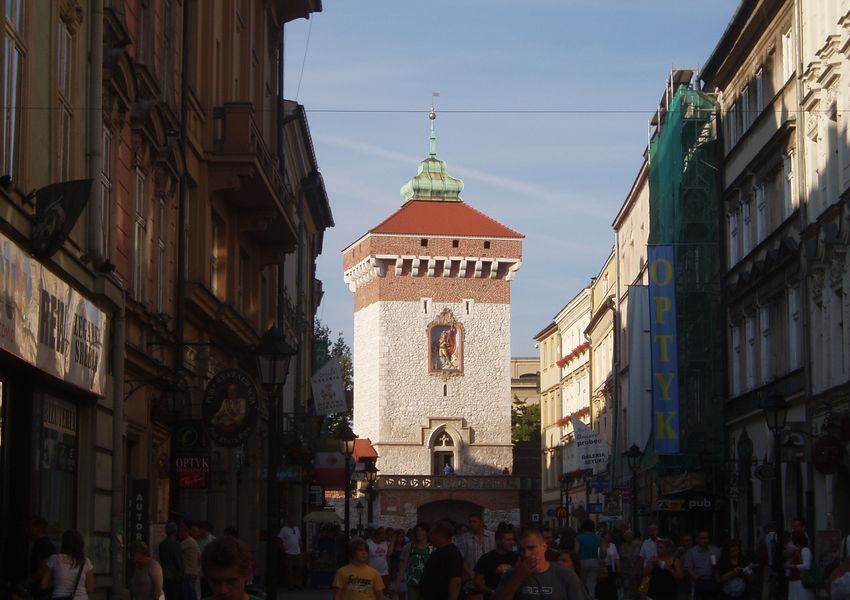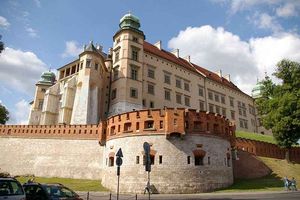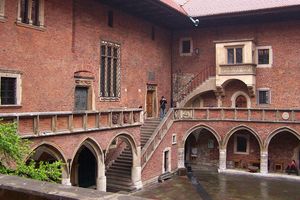Cracow / Kraków
Cracow / Kraków
is the second largest and one of the oldest cities in Poland. Kraków's prehistory begins with evidence of a Stone Age settlement on the present site of the Wawel Hill. A legend attributes Kraków's founding to the mythical ruler Krakus, who built it above a cave occupied by a dragon, Smok Wawelski.

The city rose to prominence in 1364, when Casimir III of Poland founded the University of Kraków, the second oldest university in central Europe after the Charles University in Prague.
The city continued to grow under the joint Lithuanian-Polish Jagiellon dynasty. As the capital of the Kingdom of Poland and a member of the Hanseatic League, the city attracted many craftsmen, businesses, and guilds as science and the arts began to flourish.
The 15th and 16th centuries were known as Poland's Złoty Wiek or Golden Age.
Many works of Polish Renaissance art and architecture were created then, including ancient synagogues in Kraków's Jewish quarter of Kazimierz, such as the Old Synagogue. During the reign of Casimir IV, various artists came to work and live in Kraków, and Johann Haller established a printing press in the city after Kasper Straube had printed the Calendarium Cracoviense, the first work printed in Poland, in 1473.
Kraków's historic center, which includes the Old Town, Kazimierz and the Wawel Castle, was included as the first of its kind on the list of UNESCO World Heritage Sites in 1978.
 The Old Town is the most prominent example of an old town in the country. For many centuries Kraków was the royal capital of Poland, until Sigismund III Vasa relocated the court to Warsaw in 1596. The whole district is bisected by the Royal Road, the coronation route traversed by the Kings of Poland.
The Old Town is the most prominent example of an old town in the country. For many centuries Kraków was the royal capital of Poland, until Sigismund III Vasa relocated the court to Warsaw in 1596. The whole district is bisected by the Royal Road, the coronation route traversed by the Kings of Poland.
The Route begins at St. Florian's Church outside the northern flank of the old city walls in the medieval suburb of Kleparz; passes the Barbican of Kraków (Barbakan) built in 1499, and enters Stare Miasto through the Florian Gate.
It leads down Floriańska Street through the Main Square, and up Grodzka to Wawel, the former seat of Polish royalty overlooking the Vistula river. Old Town attracts visitors from all over the World.
Kraków historic center is one of the 13 places in Poland that are included in the UNESCO World Heritage Sites. The architectural design of the Old Town had survived all cataclysms of the past and retained its original form coming from the medieval times.
 The Old Town district of Kraków is home to about six thousand historic sites and more than two million works of art. Its rich variety of historic architecture includes Renaissance, Baroque and Gothic buildings.
The Old Town district of Kraków is home to about six thousand historic sites and more than two million works of art. Its rich variety of historic architecture includes Renaissance, Baroque and Gothic buildings.
Kraków's palaces, churches, theatres and mansions display great variety of color, architectural details, stained glass, paintings, sculptures, and furnishings.
Points of interest outside the city include the Wieliczka salt mine, the Tatra Mountains 100 km (62 mi) to the south, the historic city of Częstochowa, the former Nazi concentration camp at Auschwitz, and Ojcowski National Park, which includes Pieskowa Skała Castle.

































































